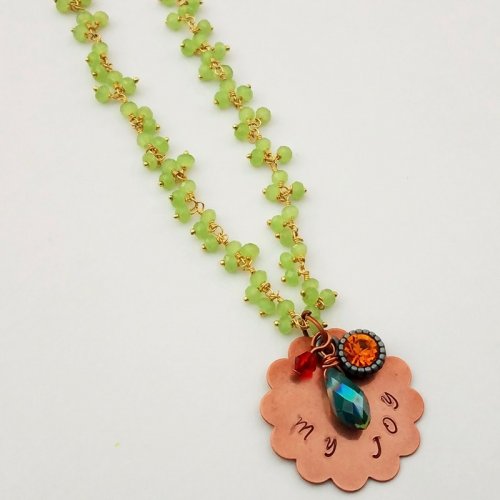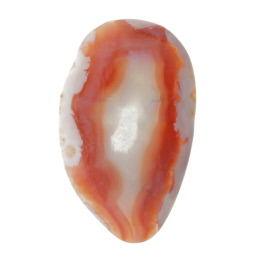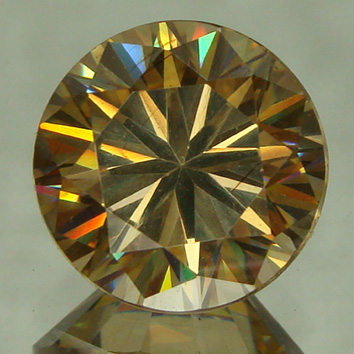- { Create }
- Wire
- Sheet
- Tools
- DVDs
- Streaming Video
-
Beads
- Handmade Venetian Glass Beads
-
Shop by Gemstone
- Agate - Blue Crazy Lace
- Agate - Blue Lace
- Agate - New Brazilian
- Agate - Pink Crazy Lace
- Agate - Purple Crazy Lace
- Agate - Rainforest
- Agate - Turritella
- Amethyst
- Amethyst - Dog Teeth
- Apatite - Blue
- Bronzite
- Carnelian
- Carnelian - Matte
- Cat's Eye
- Chrysocolla
- Dumortierite
- Dumortierite - Purple
- Goldstone - Blue
- Goldstone - Brown
- Goldstone - Green
- Hematite
- Jade
- Jade - New Burma
- Jade - West African
- Jade - Yellow
- Jasper - Apple
- Jasper - Black Silver Leaf
- Jasper - Dragons Blood
- Jasper - Green Brecciated
- Jasper - Imperial
- Jasper - Iron Zebra
- Jasper - Mexican Red Snowflake
- Jasper - Noreena
- Jasper - Picasso
- Jasper - Picture
- Jasper - Porcelain
- Jasper - Red Creek
- Jasper - Red Creek - Matte
- Jasper - Red Porcelain
- Jasper - Venus
- Jasper - White Lace Red
- Jasper - Wildhorse
- Labradorite
- Lapis
- Malachite
- Obsidian - Golden
- Obsidian - Snowflake
- Onyx
- Onyx - Matte
- Orange Sodalite
- Prehnite
- Pyrite
- Quartz - Blue Green
- Quartz - Cherry
- Quartz - Rose
- Quartz - Smoky
- Rhyolite
- Rhyolite - Bird's Eye
- Sardonyx
- Seraphinite
- Sodalite
- Tiger Eye
- Tiger Eye - Blue
- Tiger Eye - Red
- Turquoise - African
- Turquoise - Yellow
- Pearls
- Swarovski Crystal Beads
- Stones & Supplies
- On Sale Now
Home
/ Jewelry Making Articles
/ American Wire Gauge
American Wire Gauge
by Judy Ellis
How is wire gauged? Since 1857, the United States has been using a standard system in measuring the diameter of wire. This system is known as American Wire Gauge (AWG), or the Brown & Sharp (B&S) gauge, and was invented by J.R. Brown.
A customary wire gauge is circular or rectangular in shape with grooves along the outside. The size of the grooves represents the diameter of the wire. The higher the gauge number, the smaller the diameter and finer the wire. The lower the gauge number, the bigger the diameter and thicker the wire. When wire is manufactured, thick wire is progressively stretched to thinner and thinner wire, until the desired gauge is achieved. This process is recognized as wire drawing or die casting. The wire is pulled through one or more drawing dies (a metal mold consisting of larger to smaller holes) to acquire a number gauge. The wire gauge measurement refers to the number of dies that the wire had to be pulled through to achieve the specific diameter. In other words, higher gauge wires are pulled through more dies than the lower gauge wires.
AWG measurements can be found from a 000000 gauge, which is ¬about a half an inch in diameter, down to a 40 gauge, which is equivalent to 0.00314 inches or .07986 millimeters in diameter. Typical telephone wire is 22, 24, or 26 gauge, household wiring is 12 or 14, and electronic wiring is commonly a 20 gauge. In the AWG system, when the measurement of the gauge decreases by six, the diameter of the wire doubles. For instance, a 24 gauge wire is about .02" in diameter, an 18 gauge wire is about .04" in diameter, and a 12 gauge wire is about .08" in diameter.
AWG measurements can be found from a 000000 gauge, which is ¬about a half an inch in diameter, down to a 40 gauge, which is equivalent to 0.00314 inches or .07986 millimeters in diameter. Typical telephone wire is 22, 24, or 26 gauge, household wiring is 12 or 14, and electronic wiring is commonly a 20 gauge. In the AWG system, when the measurement of the gauge decreases by six, the diameter of the wire doubles. For instance, a 24 gauge wire is about .02" in diameter, an 18 gauge wire is about .04" in diameter, and a 12 gauge wire is about .08" in diameter.
Note: Great Britain and Canada do not use the AWG; they use what is known as the Imperial or British Standard Wire Gauge (SWG or BSG). Under the SWG system, the thickest wire is 7/0 gauge, which is about 12.7mm and the thinnest is 50 gauge, which is equivalent to 25 µm. Just to give an example of the difference between AWG and SWG, wire gauged at 1 in AWG has a diameter of 0.28997 inches; in SWG its diameter is 0.3 inches."
Materials

Wire
Shop Now
Add All Items to Cart
Tools

Wire Gauge by Euro Tool
GAU-144.10
- GAU-144.10
- Lesson Quantity: 1.00 pieces
- Purchase Quantity: 1.00 each
- Price: $13.97
- Gold Club Price: $10.48
Add to Bag

Wire Gauge for All Sizes of Wire- Pack of 1
G7-8
- G7-8
- Lesson Quantity: 1.00 pieces
- Purchase Quantity: 1.00 each
- Price: $13.97
- Gold Club Price: $10.48
Add to Bag
Add All Items to Cart
Supply Detail
loading...
Change Metal:
This Article requires:
Purchase quantity:
Price: $
Gold Club Price: $
Purchase quantity:
Price: $
Gold Club Price: $
Add to Bag
- Category: General Education
- Technique(s): General Education
Other Articles by Judy Ellis
The premier place for all your jewelry making needs. The best in wire, tools, cabochons, gemstone beads and more. As well as a superior resource for educational support to help build your jewelry making skills and techniques.























 Gem Profile- Moissanite
Gem Profile- Moissanite Birthstone Swarovski Colors
Birthstone Swarovski Colors Gem profile- Paua and Abalone
Gem profile- Paua and Abalone Tips for Tucson Shopping- Gem Show Secrets
Tips for Tucson Shopping- Gem Show Secrets About Jewelry Chain- About Ball Chain
About Jewelry Chain- About Ball Chain About Jewelry Chain- Snake Chain and Omega Chain
About Jewelry Chain- Snake Chain and Omega Chain About Jewelry Chain- Bar Chain and Peanut Chain
About Jewelry Chain- Bar Chain and Peanut Chain About Jewelry Chain- Cable Chain and Rolo Chain
About Jewelry Chain- Cable Chain and Rolo Chain About Jewelry Chain- Curb Chain and Gourmette Chain
About Jewelry Chain- Curb Chain and Gourmette Chain About Jewelry Chain- Figaro Chain
About Jewelry Chain- Figaro Chain About Jewelry Chain- Infinity Chain and Anchor Chain
About Jewelry Chain- Infinity Chain and Anchor Chain About Jewelry Chain- Chain Reference Sheet
About Jewelry Chain- Chain Reference Sheet About Jewelry Chain- Venetian Chain and Box Chain
About Jewelry Chain- Venetian Chain and Box Chain About Jewelry Chain- Wheat Chain and Rope Chain
About Jewelry Chain- Wheat Chain and Rope Chain Introduction to Chain
Introduction to Chain Access More Money by Making Jewelry When Your Prices Are Right
Access More Money by Making Jewelry When Your Prices Are Right An Introduction to Beads and Beading
An Introduction to Beads and Beading Common Gemstone Misconceptions
Common Gemstone Misconceptions Wire Wrapped Christmas Tree
Wire Wrapped Christmas Tree How To Polish Metal Jewelry using a Rotary Tumbler
How To Polish Metal Jewelry using a Rotary Tumbler How To Polish Your Own Rocks using a Rotary Rock Tumbler
How To Polish Your Own Rocks using a Rotary Rock Tumbler How to Merchandise Your Jewelry on the Internet
How to Merchandise Your Jewelry on the Internet How to Use Twitter as a Wire Jewelry Artist
How to Use Twitter as a Wire Jewelry Artist 20 Ideas to get your Jewelry Biz Busy
20 Ideas to get your Jewelry Biz Busy Watching the Precious Metals Market
Watching the Precious Metals Market Jewelry Design Ideas - Get Inspired
Jewelry Design Ideas - Get Inspired Measuring Tools
Measuring Tools July Birthstone - The Ruby
July Birthstone - The Ruby February Birthstone- Amethyst
February Birthstone- Amethyst March Birthstone - Aquamarine and Bloodstone
March Birthstone - Aquamarine and Bloodstone September Birthstone - Sapphire
September Birthstone - Sapphire November Birthstones - Topaz and Citrine
November Birthstones - Topaz and Citrine October Birthstones - Rose Zircon, Pink Tourmaline and Opal
October Birthstones - Rose Zircon, Pink Tourmaline and Opal April Birthstone - The Diamond
April Birthstone - The Diamond August Birthstone - Peridot and Sardonyx
August Birthstone - Peridot and Sardonyx June Birthstones - Alexandrite, Pearl and Moonstone
June Birthstones - Alexandrite, Pearl and Moonstone Metalsmithing
Metalsmithing Featured Tool - Mini TruStrike Hammers
Featured Tool - Mini TruStrike Hammers Natural Jasper Stones - Cabochon Gemstones
Natural Jasper Stones - Cabochon Gemstones Organize Your Jewelry Box
Organize Your Jewelry Box Pearls- It's a Cultural Thing
Pearls- It's a Cultural Thing Soldering 101
Soldering 101 Starting Your Own Home Jewelry Business
Starting Your Own Home Jewelry Business The Art of Creating Chainmail
The Art of Creating Chainmail Why Should I Be Using Facebook
Why Should I Be Using Facebook Make Handmade Neck Cords on a Dime
Make Handmade Neck Cords on a Dime Tagging Handmade Jewelry Gifts
Tagging Handmade Jewelry Gifts Share Your Expertise with Your Community
Share Your Expertise with Your Community Creating Color Schemes for Jewelry Making
Creating Color Schemes for Jewelry Making Bronze, Brass, Nickel Silver and Copper Base Metals
Bronze, Brass, Nickel Silver and Copper Base Metals Gemstone Treatments
Gemstone Treatments How Wire is Made
How Wire is Made Beading A-B-C's
Beading A-B-C's How to Set Up Your Workspace
How to Set Up Your Workspace Gem Profile- Diamond
Gem Profile- Diamond Gem Profile- Peridot
Gem Profile- Peridot Gem Profile- Goldstone
Gem Profile- Goldstone Gem Profile- Cryptocrystalline Quartz Introduction
Gem Profile- Cryptocrystalline Quartz Introduction Gem Profile- Banded Agate and Brecciated Agate
Gem Profile- Banded Agate and Brecciated Agate Gem Profile- Emerald
Gem Profile- Emerald Gem Profile- Titanite or Sphene
Gem Profile- Titanite or Sphene Gem Profile- Morganite
Gem Profile- Morganite Gem Profile- Desert Rose
Gem Profile- Desert Rose Gem Profile- Iolite
Gem Profile- Iolite Gem Profile- Zultanite
Gem Profile- Zultanite Gem Profile- Maw Sit Sit
Gem Profile- Maw Sit Sit Gem Profile- Tanzanite
Gem Profile- Tanzanite Gem Profile- Aquamarine
Gem Profile- Aquamarine Gem Profile- Turquoise
Gem Profile- Turquoise Gem Profile- Turquoise Types
Gem Profile- Turquoise Types Gem Profile- What's Druze
Gem Profile- What's Druze Gem Profile- Basalt
Gem Profile- Basalt Gem Profile- Fordite
Gem Profile- Fordite Gem Profile- Variscite
Gem Profile- Variscite Gem Profile- Pearls
Gem Profile- Pearls Gem Profile- Onyx
Gem Profile- Onyx Gem Profile- Sunstone
Gem Profile- Sunstone Gem Profile- Sonora Sunrise
Gem Profile- Sonora Sunrise Gem Profile- Rhodonite
Gem Profile- Rhodonite Gem Profile- Glass, Crystal and Quartz
Gem Profile- Glass, Crystal and Quartz Gem Profile- Psilomelane
Gem Profile- Psilomelane Gem Profile- Fulgurite
Gem Profile- Fulgurite Gem Profile- Cat's Eye
Gem Profile- Cat's Eye Gem Profile- Carnelian
Gem Profile- Carnelian Gem Profile- Petoskey Stones and Indonesian Fossil Coral
Gem Profile- Petoskey Stones and Indonesian Fossil Coral Gem Profile- Rutilated Quartz
Gem Profile- Rutilated Quartz Gem Profile- Chrysocolla
Gem Profile- Chrysocolla Gem Profile- Jet
Gem Profile- Jet Gem Profile- Chrysoprase
Gem Profile- Chrysoprase Gem Profile- Rhyolite
Gem Profile- Rhyolite Gem Profile- Chalcedony
Gem Profile- Chalcedony Gem Profile- Lepidolite and Sugilite
Gem Profile- Lepidolite and Sugilite Gem Profile- Unakite
Gem Profile- Unakite Gem Profile- Cowrie Shells, Conch Shells, and Drilling Shells
Gem Profile- Cowrie Shells, Conch Shells, and Drilling Shells Gem Profile- Mother of Pearl
Gem Profile- Mother of Pearl Gem Profile- Moss Agate and Plume Agate
Gem Profile- Moss Agate and Plume Agate Gem Profile- Thundereggs and Mexican Lace Agate
Gem Profile- Thundereggs and Mexican Lace Agate Gem Profile- Dumortierite
Gem Profile- Dumortierite Gem Profile- Apatite
Gem Profile- Apatite Gem Profile- Blue Topaz
Gem Profile- Blue Topaz Gem Profile- Aragonite
Gem Profile- Aragonite Gem Profile- Zircon and Cubic Zirconia
Gem Profile- Zircon and Cubic Zirconia Gem Profile- Topaz
Gem Profile- Topaz Gem Profile- Howlite
Gem Profile- Howlite Gem Profile- Sodalite
Gem Profile- Sodalite Gem Profile- Magnesite
Gem Profile- Magnesite Gem Profile- Cuprite
Gem Profile- Cuprite Gem Profile- Nuummite
Gem Profile- Nuummite Gem Profile- Bronzite
Gem Profile- Bronzite Gem Profile- Kyanite
Gem Profile- Kyanite Gem Profile- Hematite
Gem Profile- Hematite Gem Profile- Derbyshire Blue John
Gem Profile- Derbyshire Blue John Gem Profile- Eilat Stone
Gem Profile- Eilat Stone Gem Profile- Vesuvianite
Gem Profile- Vesuvianite Gem Profile- Strontium Titanate -Fabulite
Gem Profile- Strontium Titanate -Fabulite Gem Profile- Tourmaline
Gem Profile- Tourmaline Gem Profile- Larimar
Gem Profile- Larimar Gem Profile- Garnet
Gem Profile- Garnet Gem Profile- Tsavorite and Green Garnets
Gem Profile- Tsavorite and Green Garnets Gem Profile- Seraphinite
Gem Profile- Seraphinite Gem Profile- Serpentine
Gem Profile- Serpentine Viking Knit Chain and I Cord Chain
Viking Knit Chain and I Cord Chain Copper Roses
Copper Roses How to Make Medical ID Bracelets Special
How to Make Medical ID Bracelets Special Remembering the Fallen
Remembering the Fallen


